 BUY IT AT AMAZON: CLICK HERE!
BUY IT AT AMAZON: CLICK HERE!
STUDIO: Miramax Home Entertainment
MSRP: $29.99
RATED: R
RUNNING TIME: 76 Minutes
SPECIAL FEATURES:
• Commentary w/ director Jennie Livingston, editor Jonathan Oppenheimer, Willie Ninja, and Freddie Pendavis
• Outtake reel
One of
the things I like about documentary filmmaking is that it allows a group or
individual to express themselves to an objective, non-judgmental eye. Some
people may be willing to open to a camera when they wouldn’t to a human being;
others may have dreamt about being in such a position, and so the camera captures
a unique side of them, the showy side. Subtleties of character ride high during
these interviews because it’s possible for the interviewees to forget that,
while the camera doesn’t care how they act or what they say, their performances
will be seen by an audience who does.
Paris is Burning is concerned with a subculture
built on performance, the gay cross-dressers of New York City in the late 80s,
who resolve their differences with "vogues" or dance-offs (long
before Madonna got her flashing hands on it). Each of the filmmakers’ subjects
is flamboyant in performance and subtle in implication, which makes for a
compelling and well-rounded documentary.
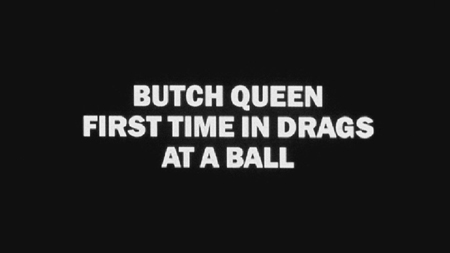
The lost chapter of Kill Bill.
The Flick
Director
Jennie Livingston splits her documentary into two distinct sections; the first
was filmed in 1987 and is the meat of the film, the introduction to the
subjects, their world, their slang, their hopes. The second takes place in 1989
and acts more as a denoument, revisiting those individuals from the first
section that could be tracked down, or were still alive.
Just
about everyone who sits down to this film will be in the dark as to its
material, so Livingston spends a good portion of the running time letting her
subjects explain the intricacies and the importance of the fashion balls that
dominate their lives. The balls are opportunities for gay men to flaunt their
dress-making skills, or their ability to pass as a woman, or their fashion
sense. More than once you’ll hear someone compare the fashion balls to
title comes from.
These
fashion balls have been going on for some time, according to Pepper LaBeija,
one of the "house mothers" (essentially gang leaders for harmless
men). By 1987, any given ball might have thirty or forty categories in which
the attendees might compete, ranging from "A Day in the Country" to "Butchest
Girl". The winners in each category are presented with trophies, and beam
as though they had just been awarded the Miss America crown and plastic
flowers.
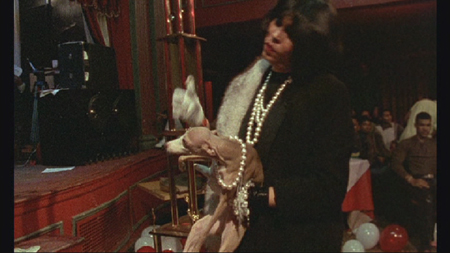
She likes her furs fresh off the vine.
Another
word you’ll hear bandied about right alongside "
than one of
be legendary in the fashion or dance worlds. In the presence of so much
compressed hope, the fashion balls take on a special significance. Not only are
they a proxy for turf wars between the different gay houses, but they are also
a chance to be — within the confines of the gay, cross-dressing,
There’s a
backlash of emotion from those of
audience, realize that this is a pretty low branch to leap for. A common meme
among the disaffected is that only white men can achieve what they want in
life, and only white women can live in the lap of luxury. The social context
has shifted since Paris is Burning was filmed, but the mindset persists and is
relevant to the audience. These sequences, intercut with shots of business-men
and -women going about their days is broad daylight, carry an undisguised
victim complex, and it’s up to the viewer to determine whether that’s deserved
or not.
Some of
the subjects have set themselves up to be victims. Venus Xtravaganza, for
example, is a petite, pale, soft-wpoken young man who, in the 1987 section,
gets picked up on the street often by men who, she claims, don’t want sex 99%
of the time. 95% of the time, she amends after thinking for a moment. She
hasn’t been able to get her sex change operation. She talks extensively about
how great her life will be when she can find a man she loves, can move up into
the mountains or down to
mother, Anji Xtravaganza, worries to the camera about how Venus goes around
with anybody who shows the slightest interest in her, chasing after her dream
in every direction but the right one. In the 1989 section. Anji explains how
Venus was found murdered after her body lay for four days in some dive motel.
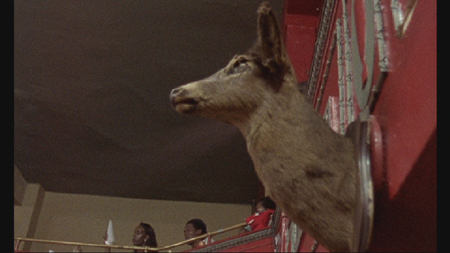
A shirt, a skirt, a pair of gloves, and a bath tub plug.
There’s
no condemnation of Venus’ choices by the filmmakers, but she is contrasted
heavily against Willie Ninja, the mother of the House of Ninja, who wants to
take voguing worldwide. In 1987, he declares to the camera his conviction that
the vogue, with its origins as gang warfare between the gay houses, will become
a sensation from one side of the globe to the other. In 1989, the filmmakers
revisit him and we hear about his trip to Japan, how they loved voguing over
there, and about the choreography work he has picked up since declaring his
intentions two years previous.
Between
these two memorable, contrasting stories,
gay man who has been around much longer than any of the young cusses we’ve seen
so far. Dorian is quiet and seems modestly educated in her vocabulary. She can
remember back in her prime when the men used to try and look like Marlene
Dietrich. Her interview is filmed from a small number of angles in her dressing
room as she applies makeup, preparing for exactly what we’re never quite sure. Her
sequence is intercut throughout the film, and her casually wise observations
form the backbone around which the other subjects cling, though they may not
know it. Dorian possesses a nonchalance that borders on fatalism regarding her
lifestyle: it’s what she does, it’s what the others do, and they can’t help it.
Some of them succeed, some of them fail. Dorian gets the last line in the film,
and it’s so perfect one can’t help but feel it was rehearsed.
That’s
kind of the point. These gay men are constantly performing — in life, as they
try to act like what society prefers; in the balls, as they show off for
judges; for themselves, as they try to achieve their own ideals. With
statistics leveled against them, it’s easy to see where Dorian’s enthusiasm
went, but with success stories like Willie Ninja’s to counterbalance, the film ends
on a pleasantly unresolved chord.
7.7 out of 10
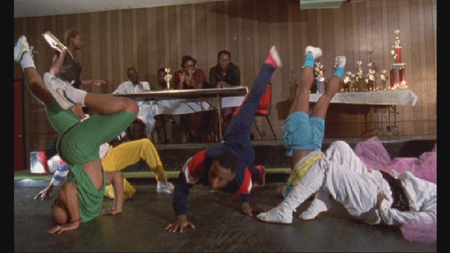
Legs, legs everywhere, nor any drop to drink.
The Look
The film
stock used originally wasn’t of the highest quality. There is a large amount of
grain during shots with low lighting, and a certain monochrome tone to a number
of the interiors. What was present on the original print is preserved nicely,
here. I have no complaints about the transfer.
The
visual style is kept engaging throughout the film, with a nice mix of static
and moving shots. The settings chosen for the primary interviews are all
interesting, visually: Pepper LaBeija’s dim dressing room and crowded living
room, Octavia Saint Laurent’s wall of models, Anji Xtravaganza’s relatively
opulent sitting room, and Dorian Corey’s backstage mirror.
7 out of 10
The Noise
Dolby
Digital mono. The dialogue during interview sequences is well-captured, but
that of impromptu meetings on street corners or during balls is muffled and
require the use of subtitles. The soundtrack is kept fairly clean, with only
occasional musical interjection.
All in
all it’s serviceable, but hardly noteworthy.
5 out of 10
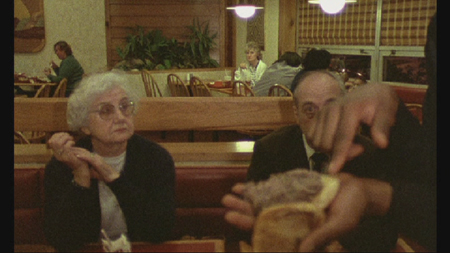
"This, this here, is my friend, old woman."
The Goodies
Paris is Burning has one of the most fascinating
commentary tracks I’ve had the chance to hear. Not only do we get the director,
Jennie Livingston, and the editor, Jonathan Oppenheimer, but we get two of the
subjects of the film to lend their observations: Willie Ninja, mother of the
House of Ninja, and Freddie Pendavis of the House of Pendavis. Alongside the
technical and cinematic observations offered by the former two, we get some
stream-of-consciousness memories from the latter. Ninja and Pendavis, though
their maintained flamboyancy, add unexpected notes of pathos to scenes of
humor, and lighten the serious moments with their affected gravity. It’s a
great track, for the contrasts of character as much as anything else.
Other
than that, the disc has only an outtake reel that doesn’t offer much. It’s a
bare-bones presentation, but if they had to include one good bonus feature, the
commentary was a good one.
7 out of 10
The Artwork
The cover
looks like a bargain bin eighties movie, the sort of thing you might
accidentally mistake for Fatal Attraction. The cast
photograph in poorly-composed and unbalanced, and surrounded by a cheesy
Photoshop glow filter. It’s exactly the sort of thing that admirers of the film
will warn potential viewers to ignore, and to just dive into what it hides.
3 out of 10
Overall: 7 out of 10